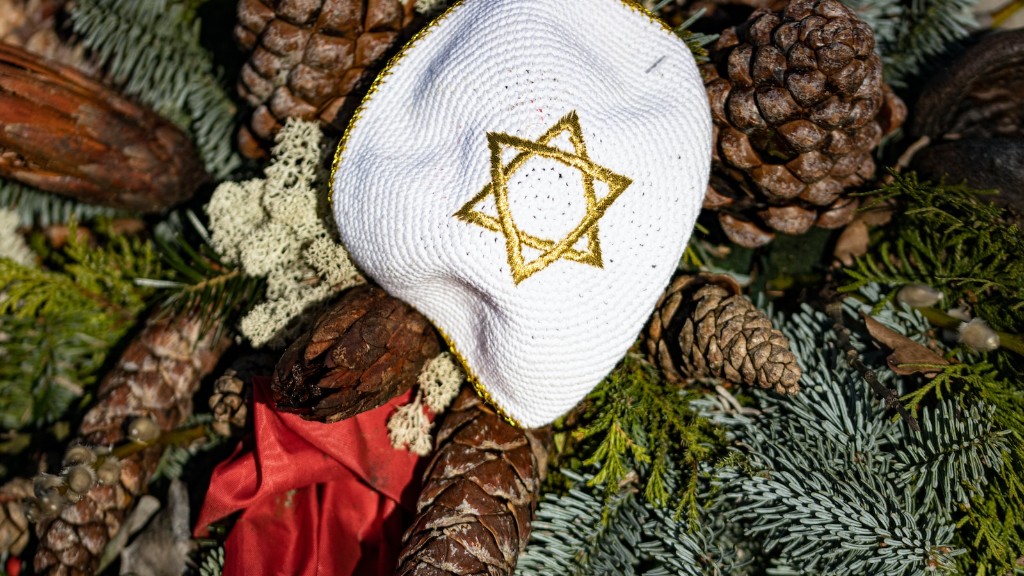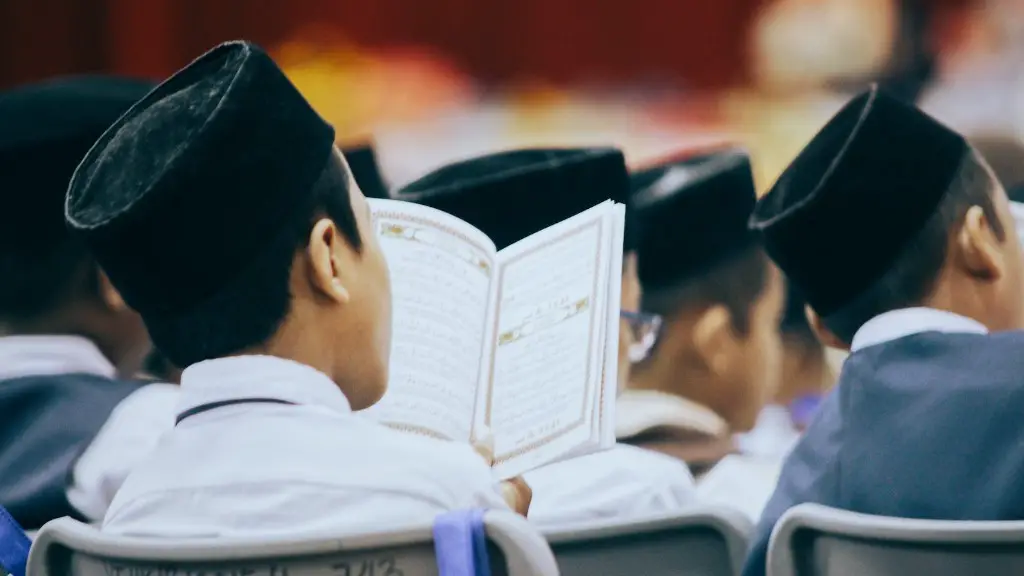Introduction to Orthodox Christianity
Orthodox Christianity, often referred to simply as Orthodoxy, is a form of Christianity that emerged in the Eastern Roman Empire and Byzantium in the fourth century CE.
Orthodox Christianity is the oldest form of the Christian religion, with roots that reach back to the early Church Fathers and beyond. The faith is based largely on the teachings of Jesus and the Apostles, as well as the writings of the Church Fathers. It is practiced in its traditional form in many parts of the world, mainly Greece, Russia, and the Middle East.
Today, there are around 300 million people around the world who identify as Orthodox Christian. Many of these belong to the Eastern Orthodox Churches, including the Greek, Russian, Serbian, and Romanian Orthodox Churches.
Differences Between Orthodox Christianity and Catholicism
When comparing Orthodox Christianity and Catholicism, the most obvious difference is in their respective attitudes towards the Church and its teachings. While Catholicism is based upon the authority of the Bishop of Rome as the Christian religion’s only legitimate source of doctrine, Orthodox Christianity is based on the authority of the various national churches, who each possess their own particular traditions and perspectives on the faith.
Apart from this, the two forms of Christianity also differ in their approaches to doctrine, liturgy, and some theological practices. For example, while the Catholic Church emphasizes the infallibility of the Pope, the Orthodox Church emphasizes the infallibility of the collective interpretation of Scripture.
The two forms of Christianity also disagree on the manner in which sacraments are administered. Catholics believe all seven sacraments are valid when administered by a priest with the proper intention, while Orthodoxy only allows that five of these sacraments (baptism, confirmation, penance, marriage and Holy Orders) are valid if administered by a priest with the proper intention.
Religious Practices in Orthodox Christianity
Religious practices in Orthodox Christianity are heavily based upon Scripture, prayer and fasting. In the Orthodox Church, Scripture, including the Old and New Testaments, is highly revered, and prayer is the primary form of communication with the divine.
Fasting is another key component of the Orthodox faith and is an integral part of many rituals, including Lenten fasting, which occurs in the weeks leading up to Easter. Additionally, the major feasts of Christmas, Epiphany, Good Friday, Ascension Day and Pentecost, as well as various other annual and special occasions such as weddings, are often marked by fasting.
Finally, the Eucharist is a central part of Orthodox Christian worship services. During the service, a loaf of bread representing the body of Christ, and a cup containing wine to symbolize His blood, are both consecrated and ingested in remembrance of the Last Supper.
Rituals and Symbols in Orthodox Christianity
Rituals and symbols are also significant in Orthodoxy. These often take the form of bells, incense, vestments and other decorations. The two main ritual practices of the Church are Baptism and Holy Communion.
Baptism is the initiation of a new believer into the Orthodox faith. During baptism, the candidate is fully immersed in water three times, signifying their spiritual rebirth in Christ. Baptism is followed by the Eucharist, wherein the faithful celebrate the presence of Christ in the bread and wine.
The other major ritual of Orthodoxy is the Liturgy, which is a service of praise and thanksgiving to God. Eastern Orthodoxy emphasizes the mystical elements of the faith, such as divine iconography and prayer ropes, as well as symbolic elements such as candles and lamps.
Spiritual Writings in Orthodox Christianity
The spiritual writings of the Church Fathers and other ancient Christians, known as Patristics, are an essential part of Orthodoxy. These include Creeds, Canons, Lives of the Saints and the Seven Ecumenical Councils. These writings, in addition to the Bible, form the core doctrine of the Orthodox faith.
These Patristic writings are particularly important because they are seen as inspired by the Holy Spirit, and in some cases, are even said to be equivalent to the scriptures. As a result, they serve as powerful expressions of the Church’s teaching and offer a glimpse into the mind and heart of early Christian thinkers.
Moreover, icons are also highly revered in the Orthodox Church, and are thought to communicate divine truth in a visual form. The use of icons has a rich history and is a powerful part of the Orthodox tradition.
Holy Days and Holidays in Orthodox Christianity
The Orthodox Church follows a strict calendar of events that are dedicated to celebrating certain holidays and Holy days. In addition to the major annual feasts such as Christmas, Easter and Pentecost, there are other special days that are set aside for specific purposes, such as the commemoration of certain saints.
These holy days are particularly important in Orthodoxy, as they are closely linked to the liturgical year and the liturgy, and serve to remind the faithful of the teachings of Jesus and the importance of living a life of piety and devotion.
Organizational Structures in Orthodox Christianity
The Orthodox Church has a hierarchical organizational structure, with a head bishop known as the Patriarch, who is typically elected by the other bishops or designated by an assembly. The Patriarch is then accountable to a synod of bishops, which consists of the bishops of the various Orthodox national churches.
The Orthodox Church also has a legislative body known as the Ecumenical Council, which consists of the bishops from all of the Orthodox Churches and functions as a form of constitution for the Church. The Ecumenical Council is tasked with developing and maintaining uniformity in Church doctrine, liturgy and practice.
Conclusion of Orthodox Christianity vs. Christianity
Overall, there are many differences between Orthodox Christianity and Catholicism, including in their respective approaches to doctrine, liturgy, and some theological practices. Additionally, the two forms of Christianity also employ distinct religious practices and hold different beliefs surrounding the nature of the sacraments. Furthermore, the two forms of the faith also differ in their organizational structures and the way in which spiritual writings and icons play an important role in their respective traditions.
Role of the Church Fathers in Orthodox Christianity
The Church Fathers are an important force within Orthodox Christianity, as they continue to influence and shape the faith through their writing and teachings. The writings of the early saints, such as St. Athanasius, St. Basil of Caesarea and St. John Chrysostom, are seen as a source of revelation that guides and directs the Orthodox Church in its understanding of Scripture and tradition.
Moreover, the writings of the Church Fathers also serve to inform the Orthodox faithful of the mysteries of the faith, and their works are seen as authoritative and binding. This is reflected in the fact that the major creeds and doctrines formulated by the early Church Fathers, such as the Nicene Creed, remain central components of the Orthodox faith.
Role of Icons in Orthodox Christianity
Icons are also a large part of Orthodox Christianity, as these visually stunning representations of saints, holy figures and events are used as a powerful form of worship. Icons serve to remind believers of certain biblical characters, stories and teachings, are seen to manifest the presence of God in a unique and powerful way, and can be used as a tool for meditation and reflection.
Moreover, icons are believed to bring the faithful closer to God, transforming the worshipper’s heart and elevating their soul. This is why icons are a part of all major Orthodox churches, and why they remain so integral to the life and worship of the Eastern Orthodox Church.
Theology of the East vs. West in Orthodox Christianity
The theology of the East and the West also differ within Orthodox Christianity. Whereas, the Eastern Orthodox theology emphasizes the importance of the collective interpretation of scripture and the infallibility of the collective Church body, the Western Church, in comparison, gives greater authority to the individual and to the authority of the Pope.
Furthermore, Eastern Orthodox theology strongly believes in the mysteries of the faith and relies heavily on the teaching of the Church Fathers, while the Western Church focuses more on human reason and logical deduction. Additionally, the Eastern Orthodox Church is widely considered to be more conservative, while the Western Church adopts more progressive approaches to social and moral issues.
Future of Orthodox Christianity
Looking to the future, it is clear that Orthodox Christianity is still a vital and relevant force in the modern world. The faith continues to spread and gain more followers, and the Church is increasingly seen as a global spiritual leader.
More and more people around the world are being drawn to the Orthodox faith, both for its spiritual insights and for its strong commitment to social issues. As a result, Orthodox Christianity is positioned to continue playing an important role in the world for many years to come.


